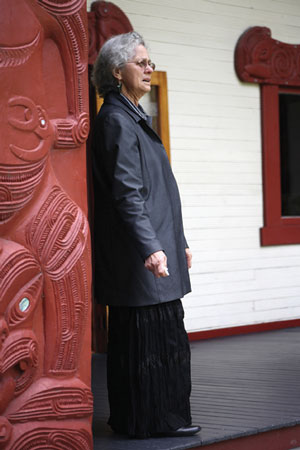-
Ngā Karere me Ngā Rauemi
News and Resources
Ngā Karere me Ngā Rauemi
News and Resources
-
Te Rangaihi Reo Māori
The Movement
Te Rangaihi Reo Māori
The Movement
-
Te Pae Kōrero
Our Community
Te Pae Kōrero
Our Community
-
Huihuinga
Events
Huihuinga
Events
-
Ngā Ara Ako
Learning Pathways
Ngā Ara Ako
Learning Pathways
-
SearchSearch
Search
Search

For Maruhaeremuri (Kui) Stirling, (Ngāti Porou, Te Whānau a Maruhaeremuri/Apanui, Ngāti Kauwhata, Ngāi Tahu), of Tuahiwi Marae, the role of kaikaranga was traditionally about status according to whakapapa.
“I was one of the few children taken to the marae. In those days the hapū had roles for each and every whānau and those roles were sacrosanct. The role of speaking on the paepae and the role of kaikaranga were both senior positions that were passed down through families; each generation taught the next and your whakapapa placed you in the order of things. It’s different today. It’s whoever puts their hand up to fulfil the role,” she says.
“I’d heard the sounds of karanga all the years of my life but when I was young I hoped I might avoid it because it’s such a big responsibility. When I was 20 and living in Christchurch, Aunty Hariata tried to teach my cousin, Kiwa and I but she gave up on us. We were both so nervous.
“I was in my thirties when the pōua and tāua at Tuahiwi asked me to karanga for a tangi. I nearly died. I was in the kitchen making a trifle and my heart started pounding and my knees were knocking. I got through that, but performing karanga never gets any easier.”
Kā Pākihi Whakatekateka o Waitaha | Canterbury | Waimakariri | 2010-19 | Story is by tangata whenua
















Comments